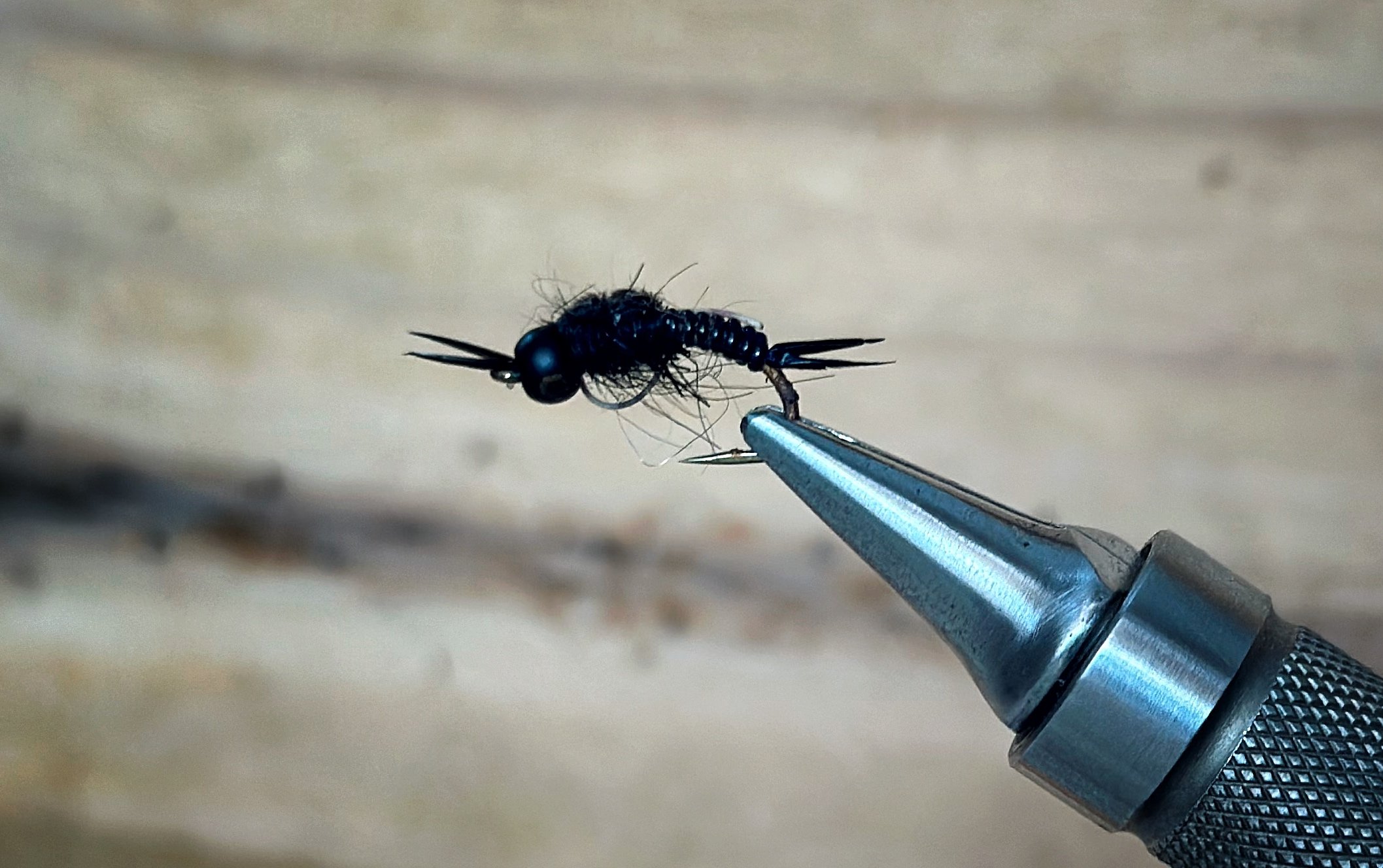Mastering Spring Trout Fishing: The Top 10 Flies for Success
Have you started planning yet?
As winter gives way to the vibrant renewal of spring, trout enthusiasts eagerly anticipate the return to their favorite waters. Springtime brings not only warmer temperatures but also a resurgence of insect activity, making it an ideal season for fly fishing in spring. To maximize your success on the water, it's crucial to have the right flies in your arsenal and know the best knots for securing them.
In this guide, we'll explore the top 10 flies for Spring trout fishing and highlight the best sizes and knots to use for each.
Let’s start with the Dry Flies
Parachute Adams:
Type: Dry Fly
Sizes: #12 to #18
Knot: Improved Clinch Knot
The Parachute Adams, a versatile dry fly for spring trout, presents a silhouette that mimics a variety of mayflies with its high visibility and realistic profile, making it irresistible to rising fish. Our recommended knot is the Improved Clinch - a reliable and easy-to-tie knot that maintains good strength.
Elk Hair Caddis:
Type: Dry Fly
Sizes: #12 to #18
Knot: Clinch Knot
The Elk Hair Caddis, a buoyant dry fly for imitating caddisflies in spring, mimics the appearance on the water's surface, making it an enticing target for trout that key in on emerging insects. Our recommended knot is the Clinch, which offers a solid connection without compromising the natural movement of the fly.
March Brown Dun:
Type: Dry Fly
Sizes: #10 to #15
Knot: Loop Knot
The March Brown Dun, a large mayfly pattern, becomes prevalent in many streams during the spring, presenting an enticing option for targeting larger trout that key in on substantial meals. The Loop Knot works well here, which is Ideal for larger dry flies, allowing for better movement and a realistic presentation.
On to our Nymphs, Emergers and Midges
Pheasant Tail Nymph:
Type: Nymph
Sizes: #14 to #20
Knot: Improved Clinch Knot
The Pheasant Tail Nymph, a classic and highly effective nymph pattern, imitates the slender profile of mayfly and stonefly nymphs prevalent in spring streams, making it an ideal choice for subsurface fishing. We like the improved Clinch Knot for this fly, as it’s ideal for maintaining strength and easy to tie.
Hare’s Ear Nymph:
Type: Nymph
Sizes: #12 to #18
Knot: Improved Clinch
The Hare's Ear Nymph, a timeless pattern, imitates a variety of aquatic insects with its buggy appearance and natural coloration, making it a reliable choice for spring nymphing and fooling trout into striking during their feeding frenzies. The Improved Clinch knot will be a reliable choice for securing this fly during your presentation.
Blue Winged Olive (BWO):
Type: Emerger
Sizes: #16 to #22
Knot: Loop Knot
The Blue Winged Olive Emerger, imitating one of the most prevalent hatches in spring, is a delicate fly designed to mimic the vulnerable stage of the insect as it rises to the surface, offering a tempting morsel for discerning trout. Try the Loop Knot with these flies, as it provides flexibility in allowing the fly to move around naturally.
Stonefly:
Type: Nymph
Sizes: #6 to #12
Knot: Improved Clinch
Stonefly patterns, active in spring, are a staple for your fly box. Their larger and often more buoyant profile attracts trout looking for substantial meals, making them an excellent option for enticing strikes. Keep on the Improved Clinch knot for this one due to the flies larger profile. Bigger flies = bigger strikes!
Zebra Midge:
Type: Midge
Sizes: #18 to #24
Knot: Palomar Knot
Zebra Midge patterns, used during the spring midge activity, are small but effective flies that can entice selective trout. There are many different midge patterns out there, but basic is always best. Very little material goes a long way! The Palomar Knot provides strength and reliability, crucial when targeting trout with these small and effective patterns.
Lastly, here are our Streamers
Wooly Bugger:
Type: Streamer
Sizes: #6 to #12
Knots: Non-Slip Loop Knot
The Woolly Bugger, a staple in any fly angler's box, is a versatile streamer that imitates baitfish and leeches, providing an enticing option for enticing aggressive strikes from predatory trout during their spring feeding frenzy. We love the Non-Slip Loop Knot for the woolies, as it provides increased movement, enhancing the flies swimming motion in the water.
Clouser Minnow:
Type: Streamer
Sizes: #6 to #10
Knot: Loop Knot
The Clouser is a highly effective pattern for many different species in fresh and salt water. It mimics small baitfish, with weighted eyes to ensure depth charge and movement. Choose the Loop Knot for extreme swimming posture and natural motions.
There you have it!
Equipping yourself with a diverse selection of these top 10 flies, knowing the recommended sizes, types, and knots for each, will significantly increase your chances of success when targeting trout in the spring. As always, pay attention to local hatches, water conditions, and the specific behavior of the trout in your favorite fishing spots. With the right flies, proper knot knowledge, and matching sizes, you'll be well on your way to a successful and enjoyable spring trout fishing season.
Tight lines!











